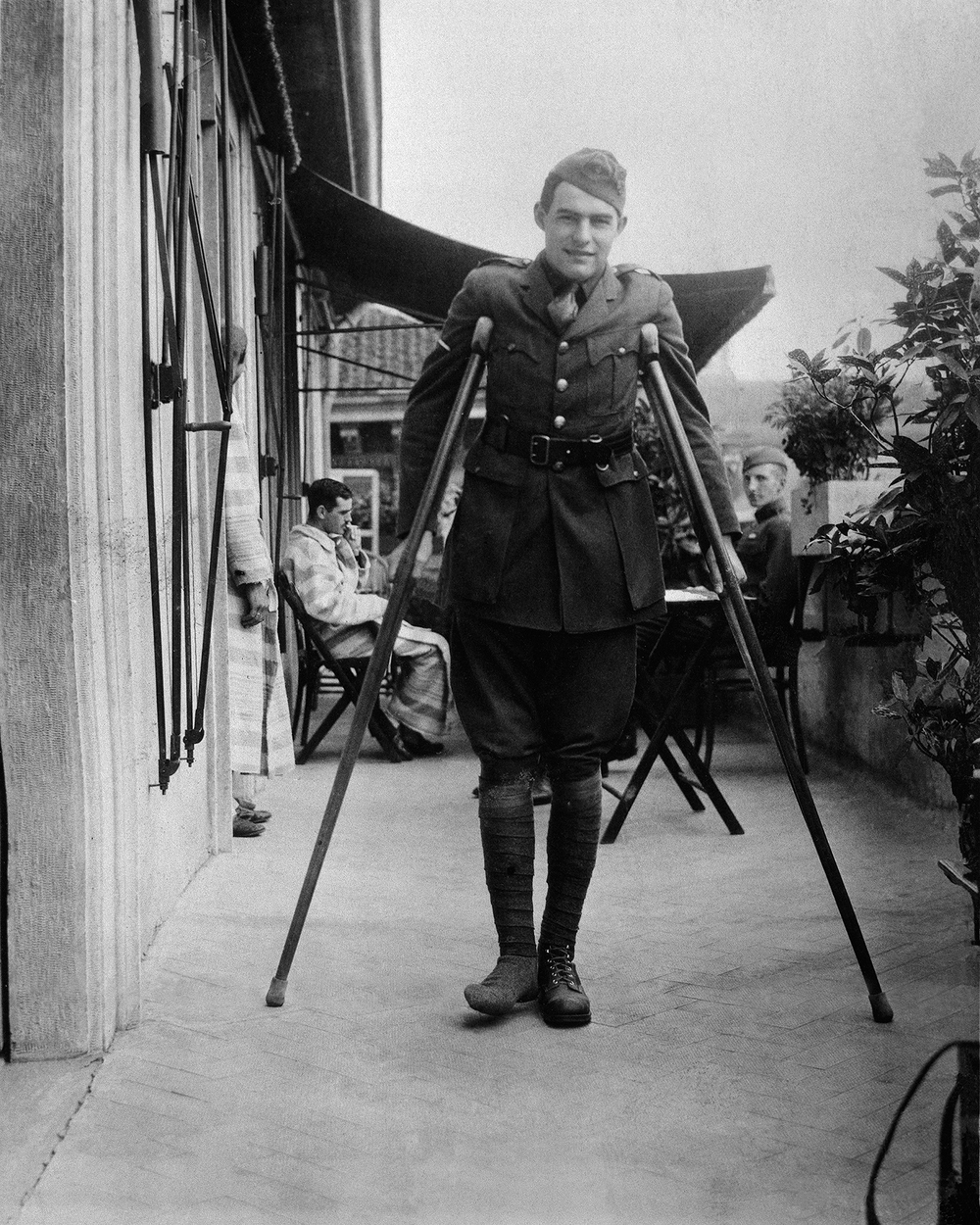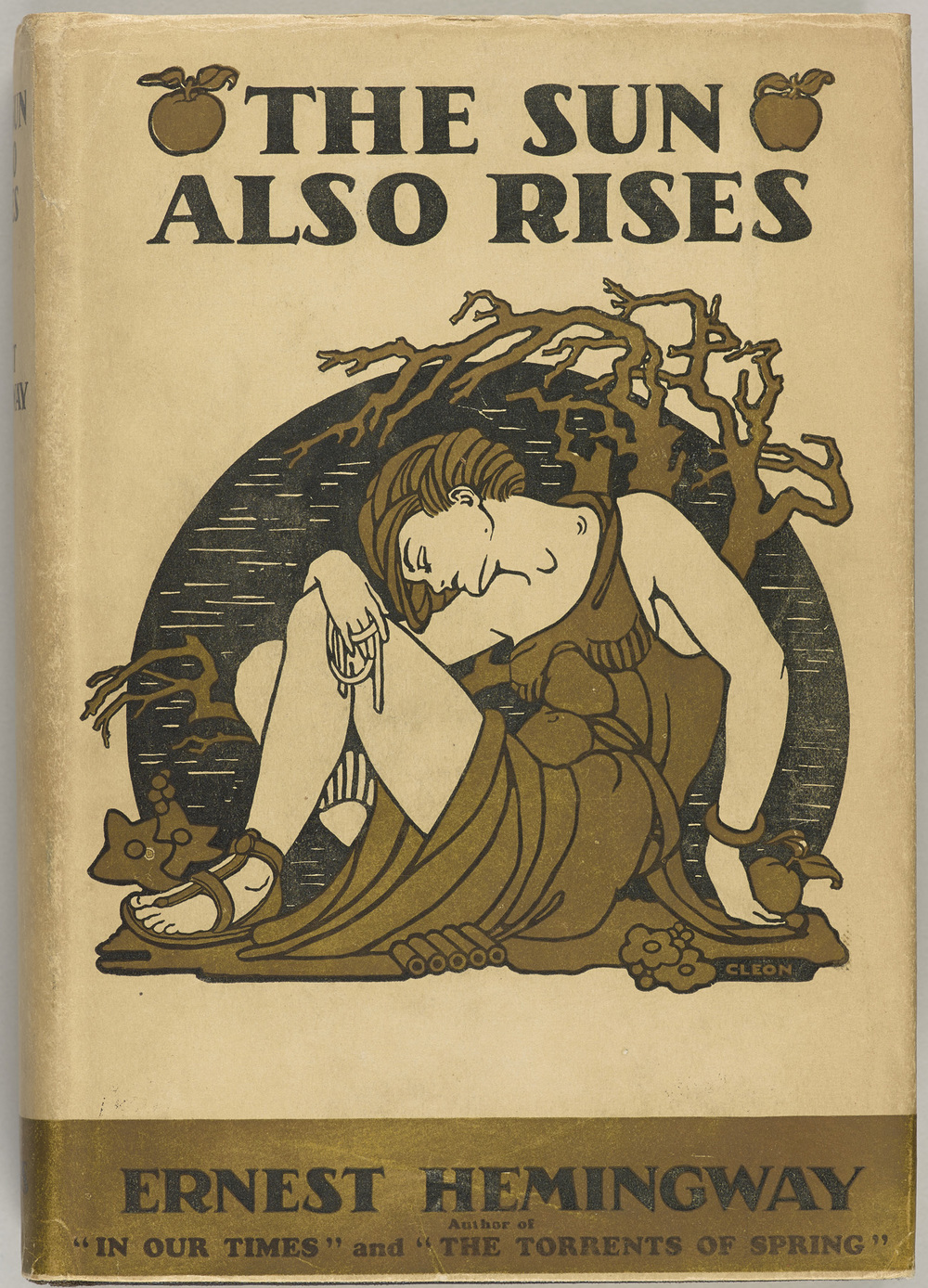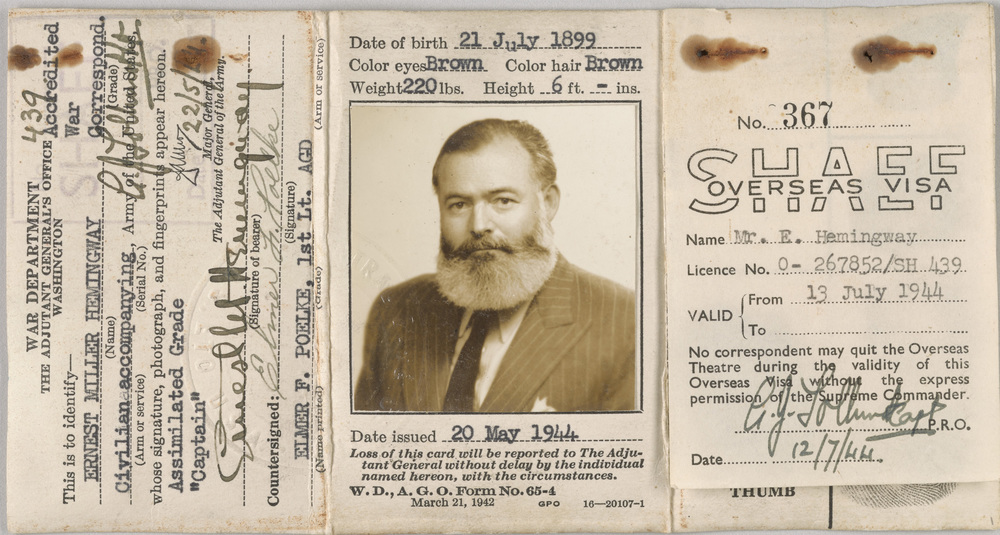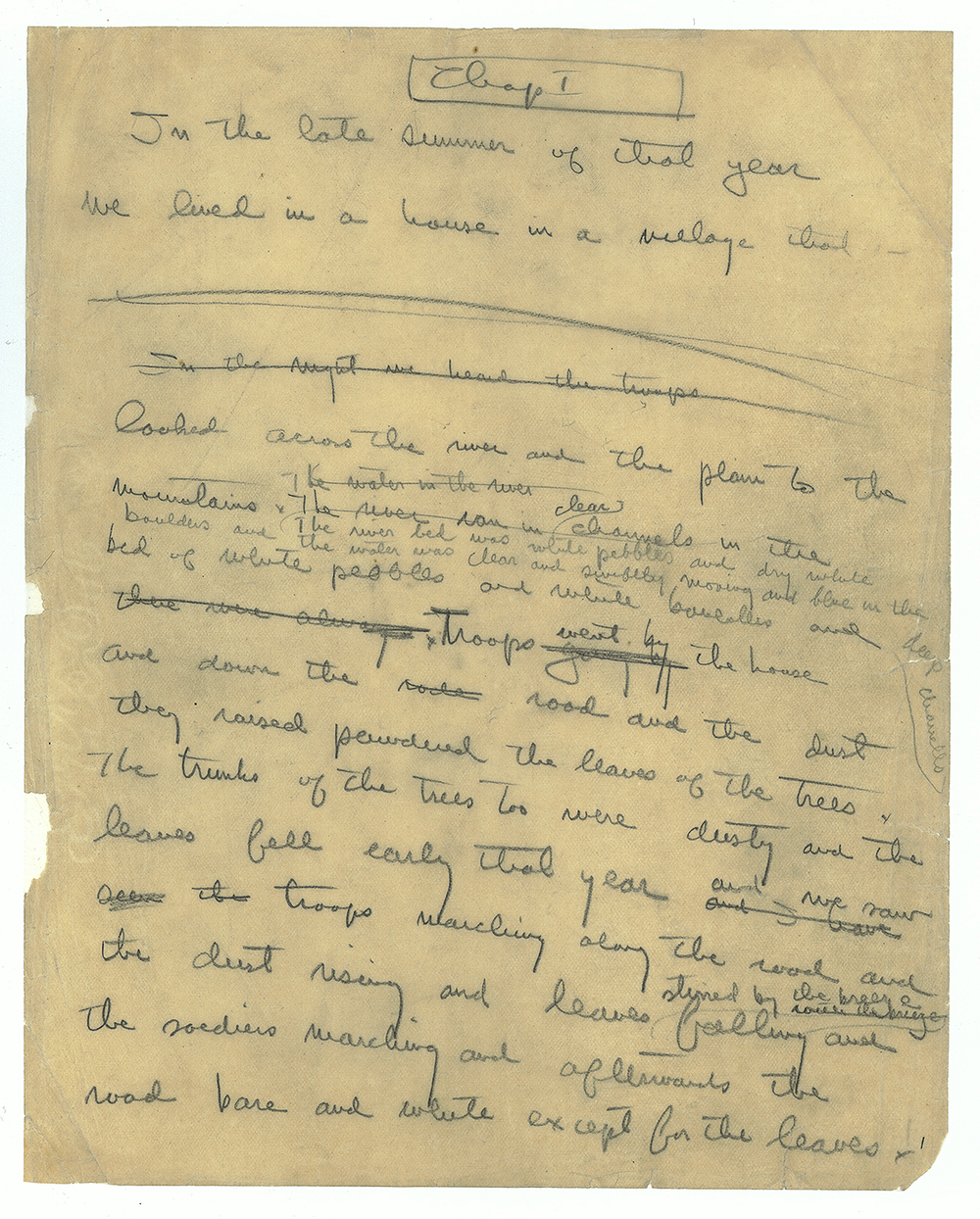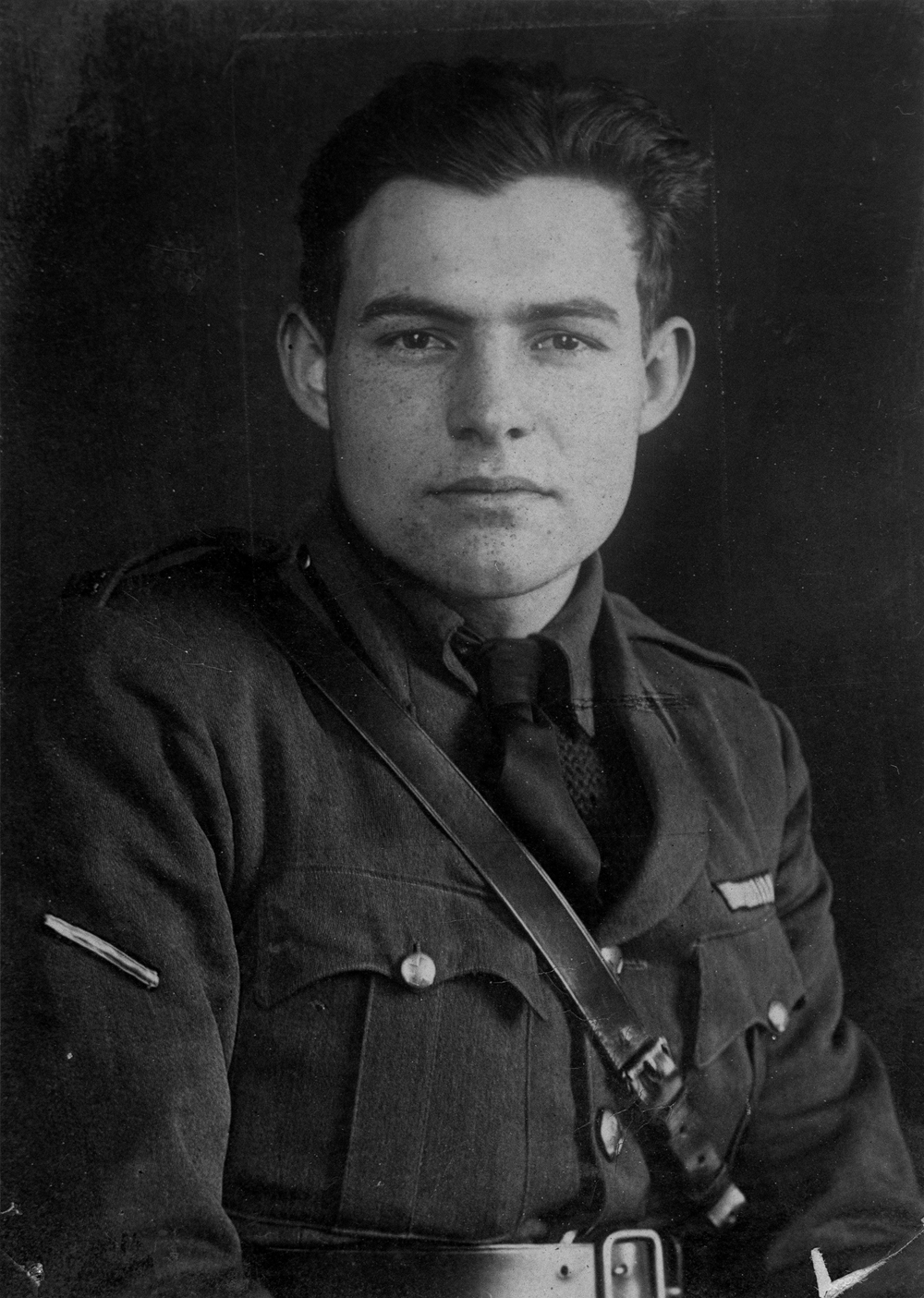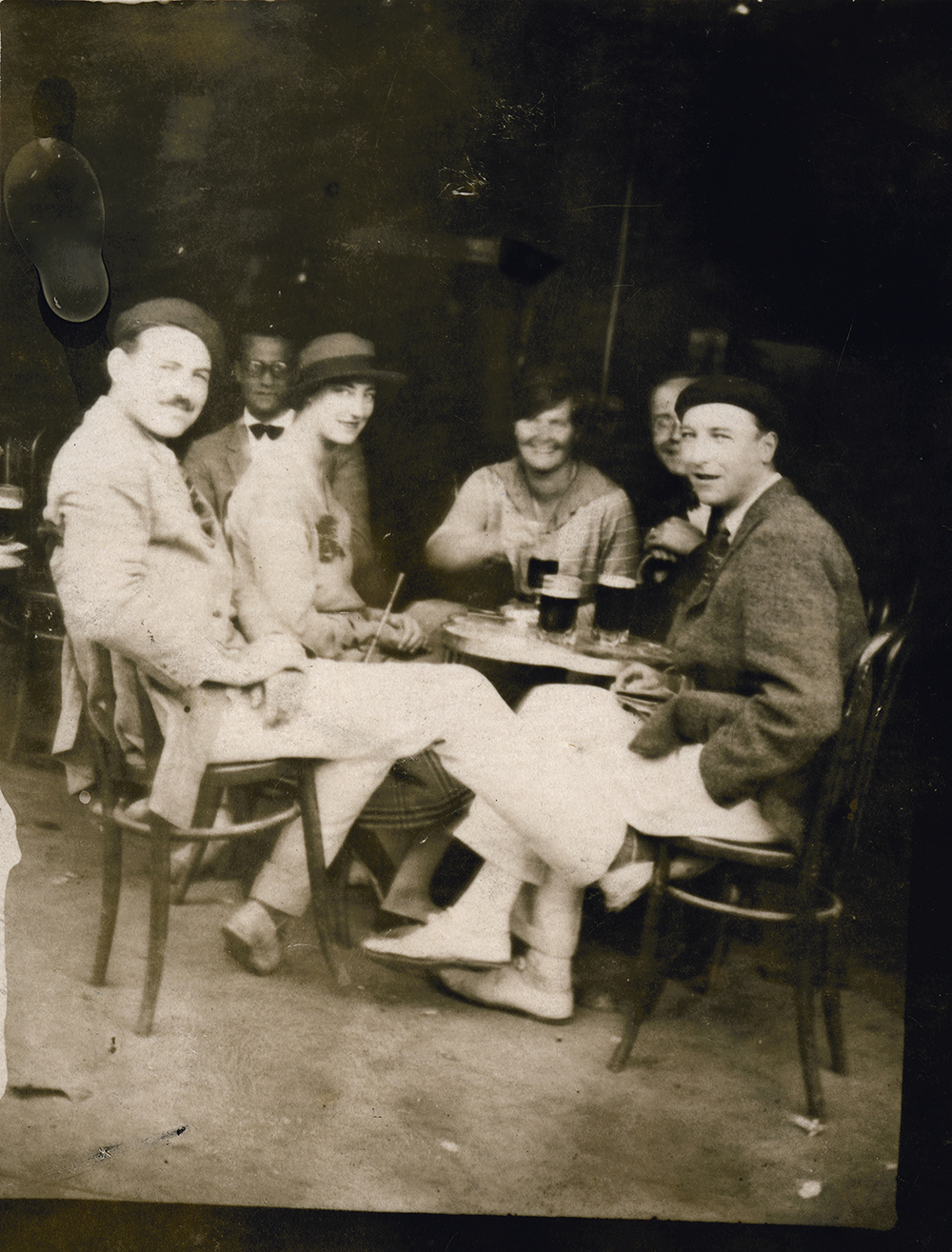Ernest Hemingway’s legend is internationally recognized. For a writer of such literary heft, it’s a wonder that his personal exploits are as famous as his works. But for every fictional have and have not, there is a host of true stories from his life that are equally compelling. On now at the Morgan Library in New York (through Jan. 31), “Ernest Hemingway: Between Two Wars” gives an insightful glimpse into the author’s many adventures during the two decades between the final years of WWI and the start of WWII—the seminal years of his career—through his ephemera.
Artifacts from Hemingway’s escapades lend color to the various chapters of his saga. Articles like a medal of valor for his work with the Red Cross on the Italian front in 1918 and the draft of a short story he subsequently wrote while convalescing in a Milan hospital paint a vibrant picture of the young writer during the Great War. There is no shortage of material, as he was fond of documenting his endeavors and collecting mementos, such as bullfighting stubs from his time in Pamplona, Spain, which he kept for inspiration while finishing his breakthrough opus, The Sun Also Rises.
There are also correspondences with friends in which Hemingway discusses everything from hunting excursions to his opinions on his contemporaries and their work. One in particular, a nine-page critique F. Scott Fitzgerald wrote to Hemingway on A Farewell To Arms, is worth examining; scribbled at the bottom of one page Hemingway retorts, “Kiss my ass / EH.”
Though Hemingway’s output may have dwindled after 1939, his lifestyle remained riotous. There is an inextricable link between the man’s life and work that cannot be understated, and the relics from this crucial period for him reveals that connection in vivid detail.
